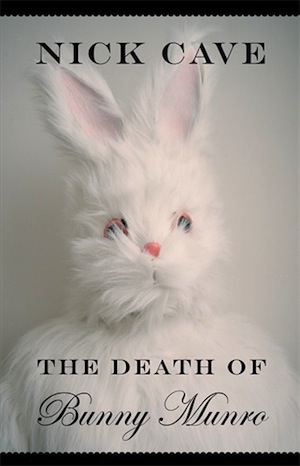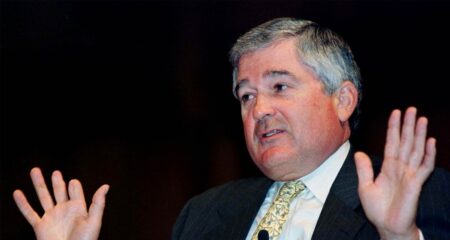 One wonders what was going through the minds of the Enhanced Editions team when it chose Nick Cave’s new novel, The Death of Bunny Munro, as one of the first books to be published in its range of e-books for the Apple iPhone.
One wonders what was going through the minds of the Enhanced Editions team when it chose Nick Cave’s new novel, The Death of Bunny Munro, as one of the first books to be published in its range of e-books for the Apple iPhone.
Readers have the choice of seamlessly switching between reading the book themselves on screen and listening to Cave read one of the bawdiest novels of recent years to them in a flat tone that is at odds with its frequently obscene content. Perhaps, the app developer would have been better off choosing something a bit safer, like Dan Brown’s latest magnum opus for the Enhanced Editions range of interactive e-books.
Then again, Cave’s book has earned strong international reviews with some critics saying that it will put him on the map as a serious novelist. The Australian musician and writer has published only one other novel in his career — And the Ass Saw the Angel, which came out in 1989.
Like his records of that approximate time — Tender Prey, The Good Son, and Henry’s Dream — that book was shot through with an obsession with Americana and Southern Gothic imagery.
The Death of Bunny Munro — despite being set in Brighton, England where Cave currently lives — retains close ties to America. This time it’s the bleak urban America of Hubert Selby Junior that the hard-boiled prose brings to mind rather than the rural south of William Faulkner and Blind Lemon Jefferson.
It’s a story about one of the most loathsome yet pitiable characters Cave has created in 30 years of writing about murderers, philanderers and other desperadoes living on the fringes of society. Governed almost entirely by his insatiable sexual appetite and unable to feel any real empathy with those around him, Bunny Munro is a textbook psychopath.
A sequence of events that will culminate in his death (given the book’s title, this shouldn’t be a spoiler) is set in motion by the suicide of his mentally unstable wife, finally unable to cope with his infidelities and callousness.
Bunny hits the road to continue his career of plying perfumes and beauty creams to lonely divorcees, with his nine year-old son, Bunny Junior in tow. The narrative drive of the book towards Bunny’s death kicks into gear from the opening sentence, but the real journey lies in learning the reasons that Bunny “found this world a hard place to be good in” and if there’s to be any chance for his redemption through his relationship with his son.
Bunny Munro is a bleak novel, but there’s tenderness, too. Bunny Junior’s unquestioning love for his late mother and father and his coming of age story are the most moving parts of the book, his growing self-awareness juxtaposed with his father’s lack of insight.
There’s plenty of humour in the book, albeit be it lewd and pitch-black. Bunny’s lascivious fantasies about Kylie Minogue — with whom Cave sung a duet on his Murder Ballads album — and Avril Lavinge become a running joke throughout the novel.
Much of the humour comes from the gap between Bunny’s perception of himself as a charming Lothario who can sell “bicycles to barracudas” and the truth. In reality, Bunny is a wretch and a buffoon who is variously used and reviled by most of those he encounters.
The Death of Bunny Munro’s great strength lies in Cave’s mercurial prose and its simple but elegant structure that plays out in three acts. As any admirer of Cave’s songwriting knows, he has a vivid way with words and an ability to fashion engaging metaphors from the unlikeliest images.
Bunny Junior hears the “bones rolling around in the flesh” of a corpulent family friend trying to comfort him after the death of his mother, while a waitress is described as “designed wholly with a compass — a series of soft, fleshy circles in the middle of which hover two large, round, colourless eyes.”
The book is uneven. There are passages where Bunny Junior seems unnaturally precocious, some juvenile jokes that fall flat, and an obsession with the carnal that seems occasionally to go beyond the demands of the narrative. Despite those shortcomings, The Death of Bunny Munro is a compelling book with moments of beauty and transcendence amidst the anger and disgust that animate its narrative. — Lance Harris, TechCentral
Subscribe to our free daily newsletter




